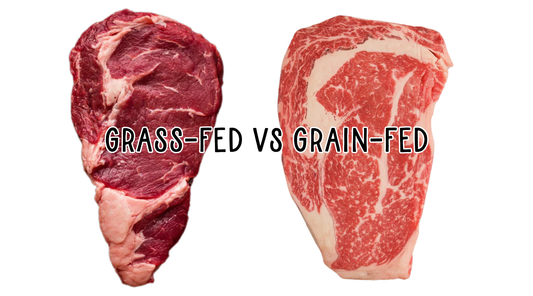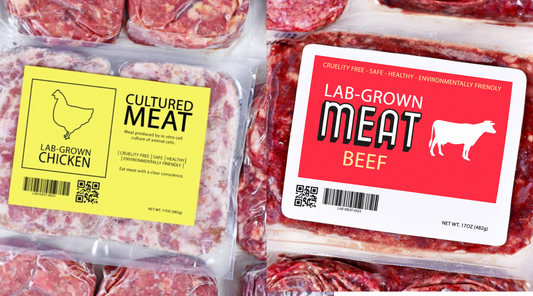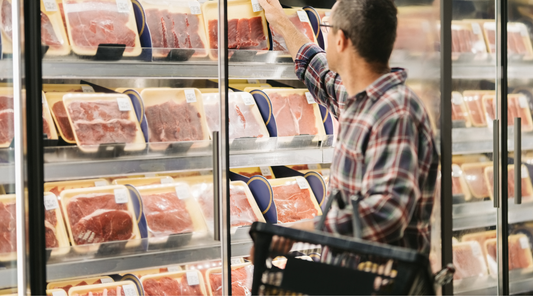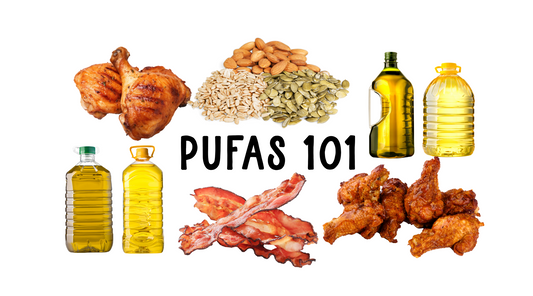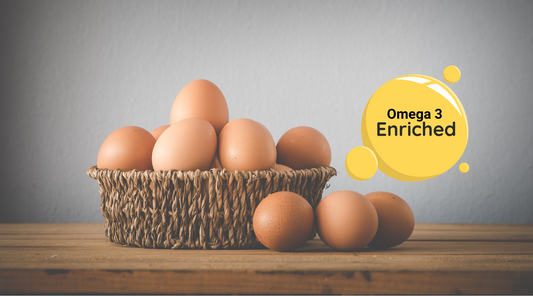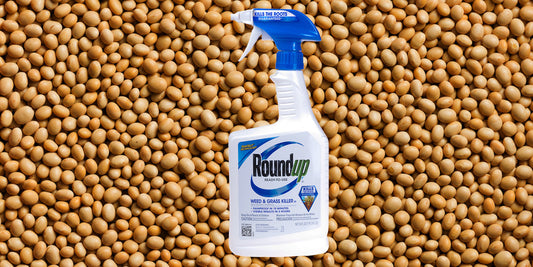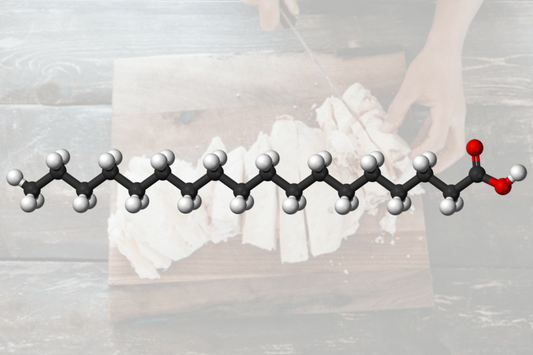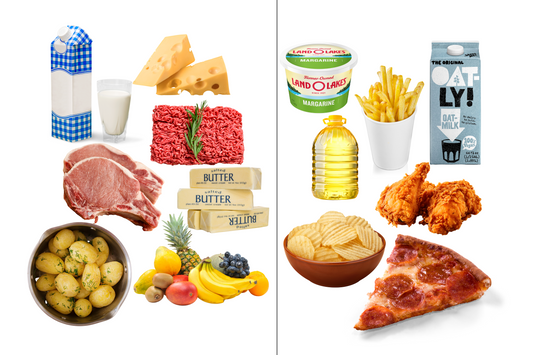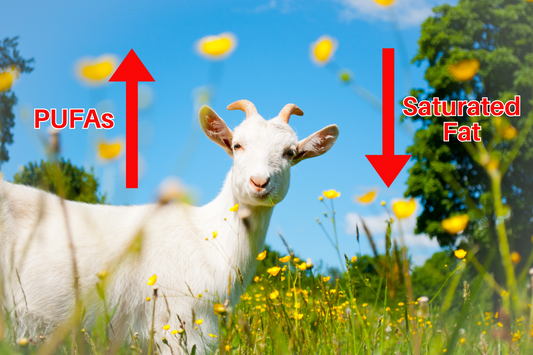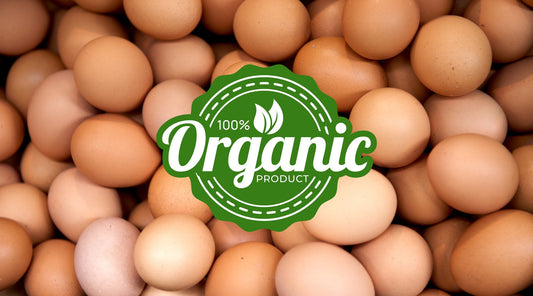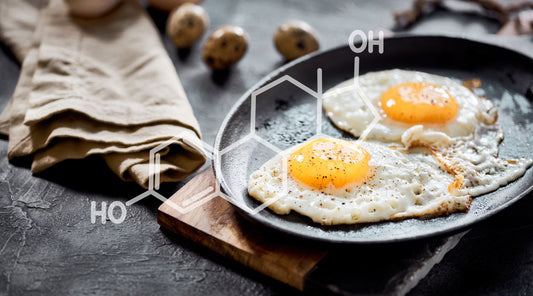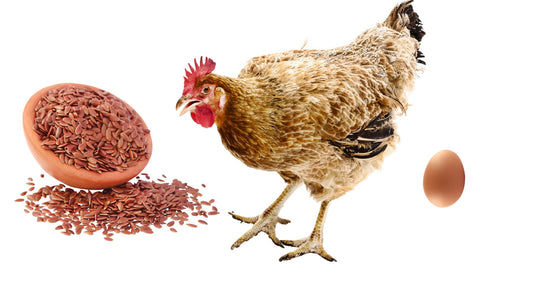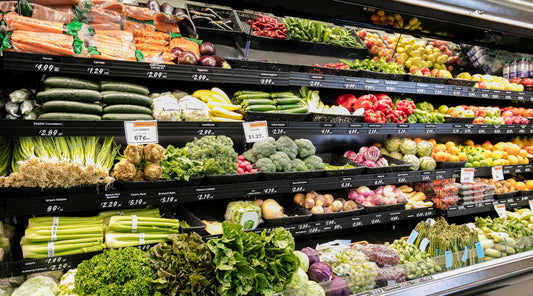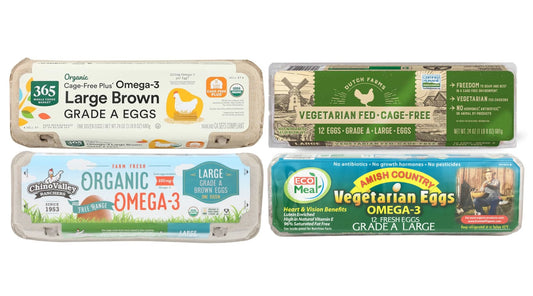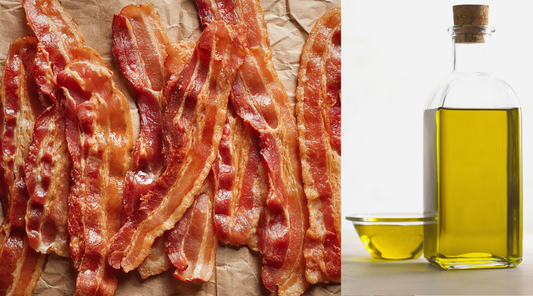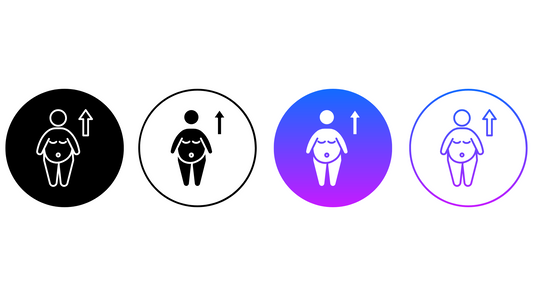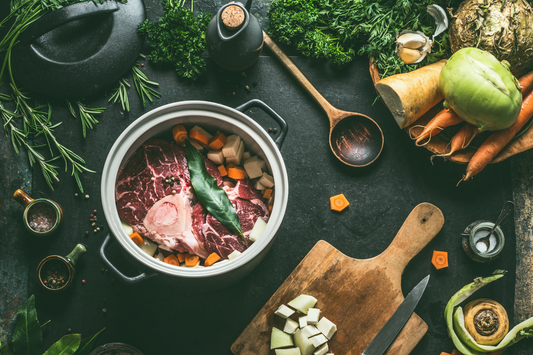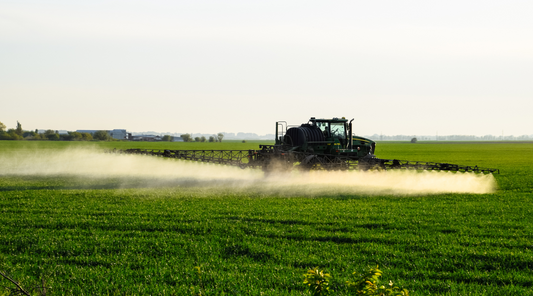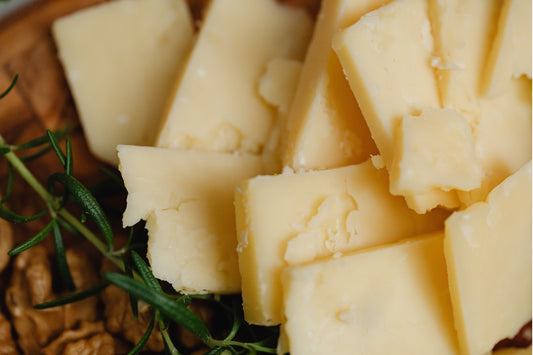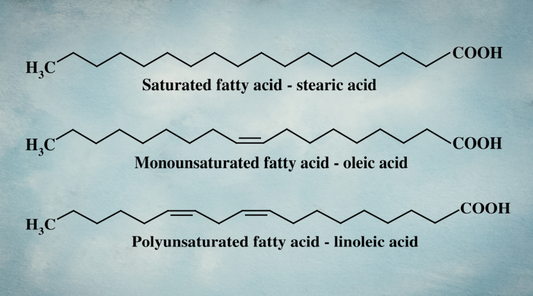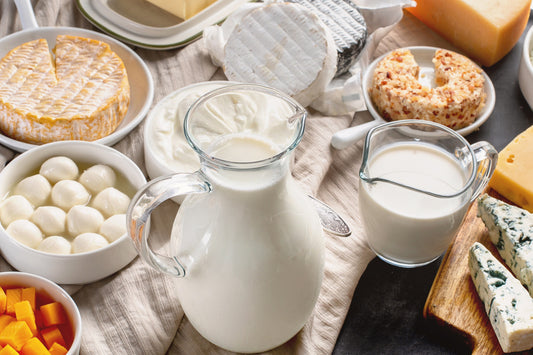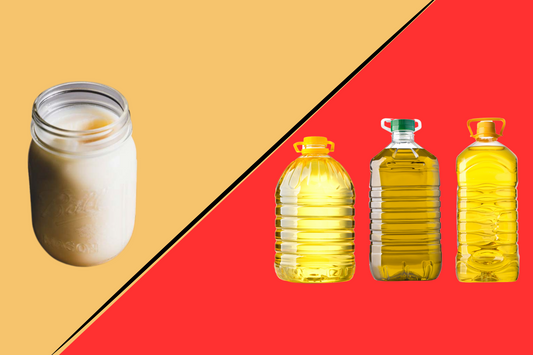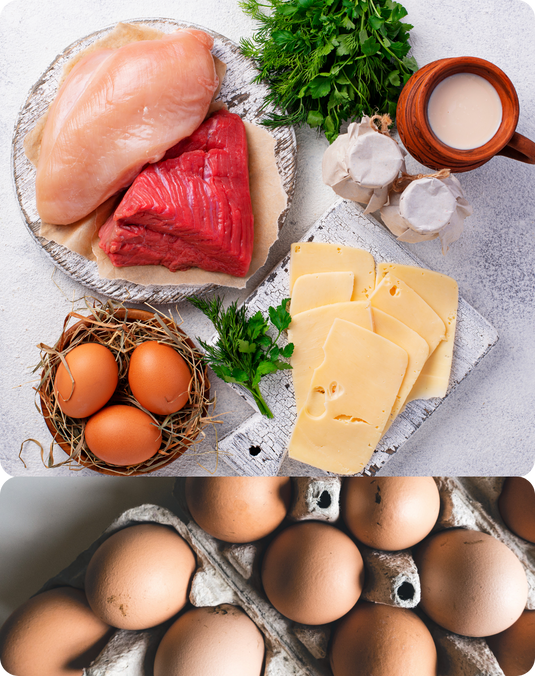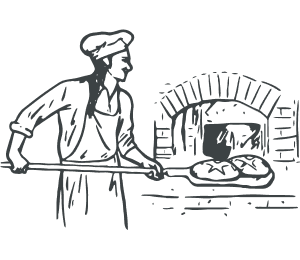
Why I Don’t Obsess Over the Omega-3 to Omega-6 Ratio
If you spend any time in the health and wellness world, you’ve probably heard this advice:
“Balance your omega-3s and omega-6s. Keep the ratio in check!”
It’s catchy, simple, and 'makes sense'.
But I believe that view is outdated, doesn't present the full picture, and stems from the flawed belief that saturated fats are harmful and that more omega-3 is always better.
Take this quote from a recent study:
“In the present study, we found no difference in the levels of inflammatory biomarkers between groups despite a significant difference in omega-6 to omega-3 ratio.” (ref)
Yes, some studies show benefits of adjusting the ratio. But others show little to no effect, or even harm.
Meta-analyses and reviews have found that omega‑3 supplementation offers minimal or inconsistent benefits, particularly for people without diagnosed cardiovascular disease. In fact, large cohort studies have even linked regular fish oil use to a 13% higher risk of atrial fibrillation and a slight increase in stroke risk for some groups. (ref)
Our ancestors didn’t fixate on omega-3s.
They ate whole, seasonal, nutrient-dense foods without reducing food to isolated components.
The modern obsession began in the late 20th century, when saturated fat was demonized, and polyunsaturated fats (PUFAs) were divided into “bad” omega-6s and “good” omega-3s.
Rather than addressing the root issue (excessive omega-6 from seed oils, processed foods, and confinement-raised animal products) we were told to “balance the ratio” by consuming more omega-3s.
Enter fish oil supplements and Omega-3 fortified everything.
The truth is: a ton of marketing dollars and lobbying went into pushing the “omega-3s are good” narrative, especially starting in the 1990s.
-
Fish oil companies saw a huge opportunity to create a health product from what was essentially a cheap byproduct of the fishing industry.
-
Food manufacturers began fortifying everything, from eggs to milk to baby formula, with omega-3s (often from fish oil or flax), and they needed a simple health “hook” to sell it.
-
Pharma & supplement industries jumped in, pushing omega-3 capsules as a heart health “must.”
-
Health organizations like the American Heart Association (funded in part by the food and pharma industries) endorsed higher omega-3 intake, further boosting public perception.
The result? Supplement sales skyrocketed: in the 2000s, the U.S. omega‑3 market reached $1–3 billion annually, despite mixed clinical results.
It was a coordinated marketing push that created a multi-billion-dollar industry.
Now, this isn’t an attack on omega-3s. They have a role: in natural, ancestral amounts. Especially when you eat wild caught fish on occasion.
But focusing on the omega-6 to omega-3 ratio distracts us from the deeper issue: saturated fats have vanished from our diets.
The truth is, manipulating the Omega 3 content is trying to outsmart mother nature and produce something that isn’t natural.
So let me explain why I don’t personally obsess over this ratio, and why you might want to reconsider it too.
More Omega-3s isn't always better.
Let's look at 'Omega-3 Enriched' eggs as an example.
Sounds nice, right?
But eggs aren’t naturally high in omega-3s. And forcing them to comes with unintended negative health consequences.
To artificially increase the Omega 3 levels, chickens are fed flaxseed, an industrial plant traditionally used in paint and textiles, not food or animal nutrition.
Feeding chickens flax consistently alters the egg, and not in a good way. Here’s what the research shows:
- More Plant-Based Omega-3s You Don’t Actually Want
When chickens eat flax to boost the Omega 3 level, the alpha-linolenic acid (ALA), a plant-based omega-3 fat, significantly increases (ref). While ALA sounds good, your body works really hard to get rid of it through various conversions and detox pathways (ref) ... it's not the type of fat your body is designed to store or use efficiently.
In one study, feeding chickens 8% flax raised the ALA in eggs from 0.62% to 5.79% (ref). In comparison, our soy- and flax-free Angel Acres eggs tested at just 0.34%, a natural, healthy level.
- Higher Levels of Oxidation
Polyunsaturated fats like ALA are unstable and prone to oxidation because of their biochemical structure. Have you ever seen flaxseed oil (which is high in ALA) at the grocery store? It is always sold in dark bottles to limit the amount of light coming in. When exposed to light, it oxidizes into linseed oil, wood polish! Flax was traditionally used as paint, not food!
So what happens when we enrich eggs with omega-3s by feeding chickens flax? Studies show they become more vulnerable to oxidative damage: during storage, transport, and even cooking (ref, ref).
Feeding chickens flaxseed reduces the stability of their meat and eggs (ref).
And the same thing happens in chicken meat, as well. Studies show that feeding chickens Omega-3-rich diets significantly decreases the oxidative stability of their meat—making it more prone to spoilage and the production of harmful breakdown products (ref) , which you then consume.
That’s not something we want on our plates.
You can read more about the health consequences of enriching eggs with Omega 3s here.
Ratios don't tell the whole story.
The omega-3:omega-6 ratio looks at one number against another, but it ignores the total amount you’re eating.
Both omega-6 and omega-3 are unstable, prone to oxidation, and inflammatory when consumed in excess. Even chicken meat enriched with omega-3s oxidizes more during cooking, creating harmful byproducts that you then consume. (ref)
Think about it this way:
-
If you’re eating huge amounts of omega-6s (from seed oils, processed foods, and conventional chicken or pork), even a “good” ratio can still mean a high PUFA load.
-
Meanwhile, if you’re eating a small, reasonable amount of omega-6s, your ratio may look “bad” on paper, but your total PUFA intake is still low, which is what matters for metabolic health.
It’s like obsessing over the frosting-to-cake ratio without caring about how big the cake actually is....
You don’t solve the modern metabolic crisis by adding more omega-3s to counterbalance excess omega-6. You solve it by restoring the natural ancestral fat balance.
Because the types of fat we choose impacts our health.
So you have to consider the bigger picture: the long-term metabolic consequences of high PUFA intake.
The real issue isn’t the ratio: it’s the total PUFA load.
Instead of chasing a perfect ratio, I focus on something simpler and more impactful: lowering the overall PUFA (polyunsaturated fat) content in the diet.
Our ancestors consumed diets that contained more saturated fats relative to unsaturated fats (PUFAs).
And for good reason.
Saturated fats like stearic acid support mitochondrial function, metabolic rate, and hormone balance.
For something to go up, something else has to go down... and in modern diets, what’s gone down is the very thing that supports health: saturated fat like stearic acid.
We don’t need more omega-3s: we need less unsaturated fat overall, and a better balance of saturated to unsaturated fats.
And when you reduce PUFA intake, you remove the very thing that’s contributing to inflammation and oxidation, sluggish metabolism, and poor energy production.
So when you look at it through that lens, the path forward is clear. It’s not about adding more omega-3s. It’s about fixing the broken fat profile of the modern food system.
Rather than chasing a graphic ratio, I prioritize:
-
Lowering overall PUFA content in food (especially seed oils and conventional meat and eggs)
-
Choosing food sources aligned with ancestral nutrient profiles, the old‑school fats our bodies evolved with like dairy, tallow, coconut oil, and animal fats from properly fed livestock
-
Supporting animal feed and production methods that naturally promote lower PUFA levels (like our corn‑free, soy‑free custom low PUFA feed).
That’s why, at Angel Acres Egg Club and Nourish Food Club, we custom-formulate and carefully craft our livestock feed to naturally lower the PUFA content in our eggs, meat, and milk. To levels our great-great grandmas would recognize.
Shop Low PUFA Angel Acres Eggs.






